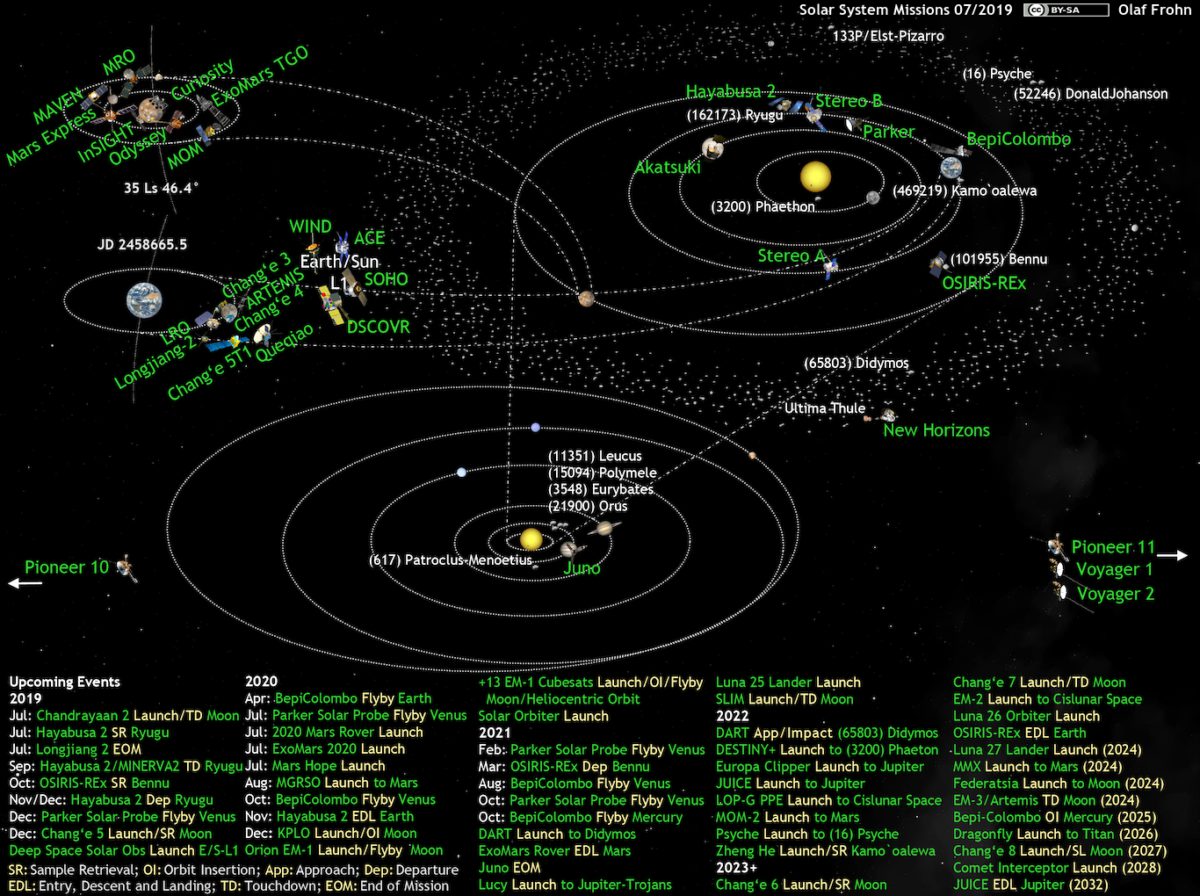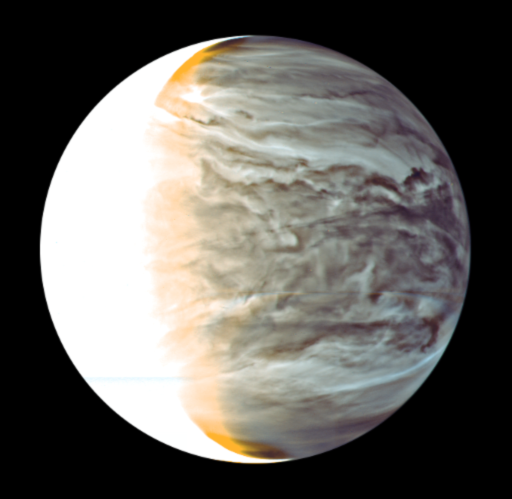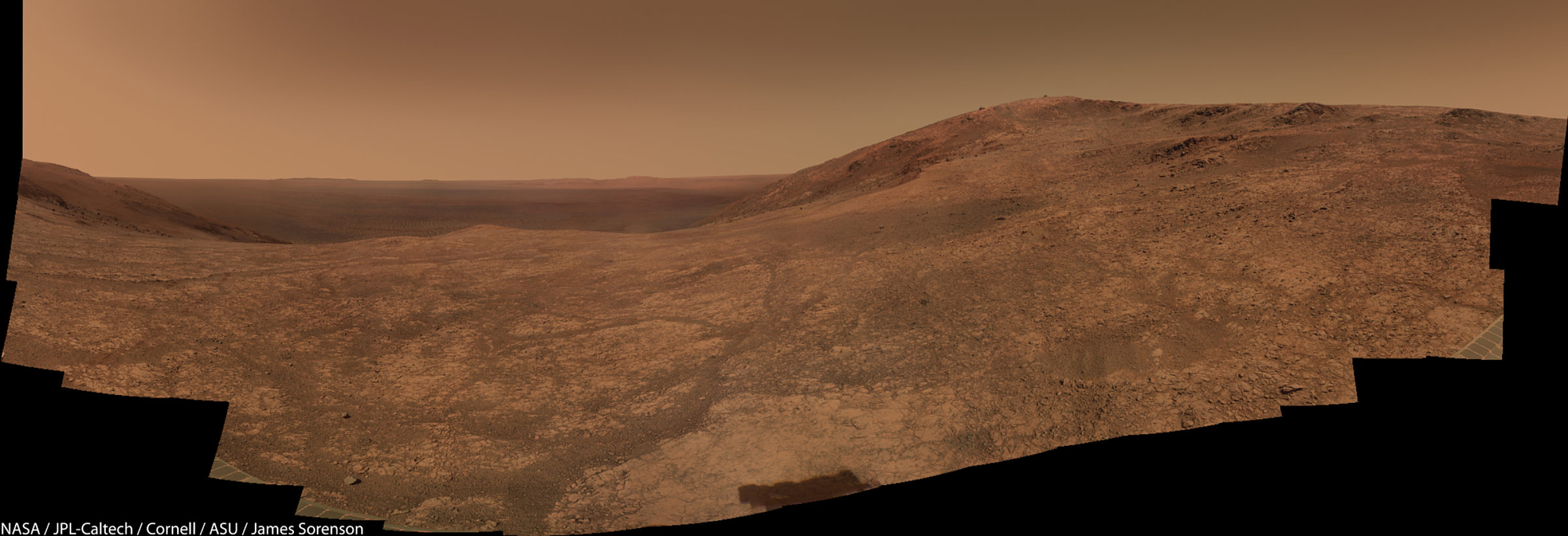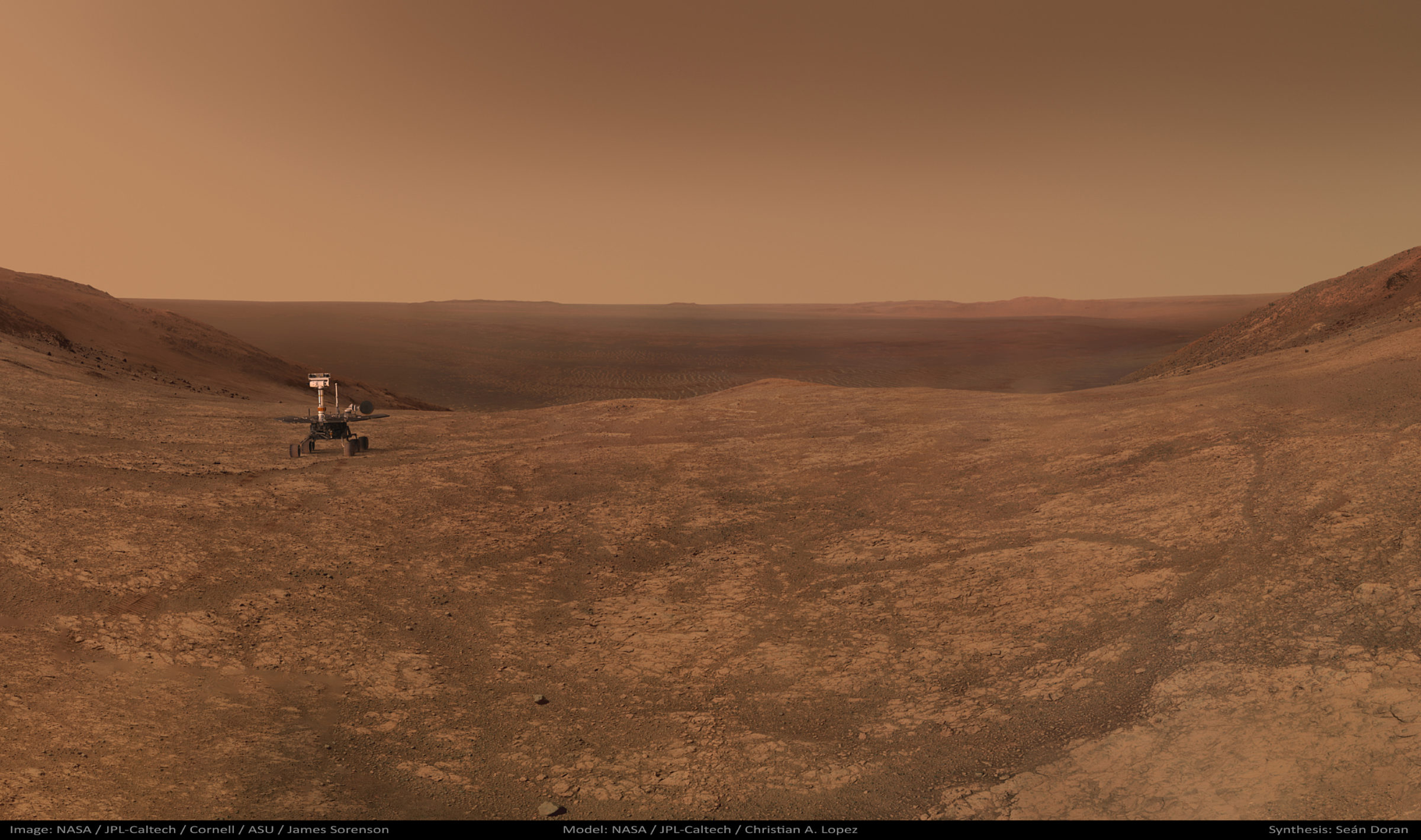Emily Lakdawalla • Jun 01, 2016
What's up in the solar system, June 2016 edition: Juno approaches Jupiter
The main excitement this month is the impending orbit insertion of Juno, which is coming up on July 4; the press room at the Jet Propulsion Laboratory opens on June 30. It's also a great month to look up at bright planets in the night sky -- Mars just passed opposition and Saturn will be at opposition on June 3 so are up all night long, while Jupiter is still hanging around in the west in the evening sky. Other than that, it's routine science operations for Akatsuki, Lunar Reconnaissance Orbiter, Chang'e 3, possibly Chang'e 5 T1, ARTEMIS, Odyssey, Opportunity, Mars Express, Mars Reconnaissance Orbiter, Curiosity, Mars Orbiter Mission, MAVEN, Dawn, Rosetta, Cassini, New Horizons, and the Voyagers, while Hayabusa2, ExoMars Trace Gas Orbiter, and Juno are cruising toward their destinations. Three astronauts will return to Earth from the space station on June 18. Last month I promised the first public release of data from the Pluto encounter phase of the New Horizons mission, but it hasn't happened yet; keep your fingers crossed that it will happen this month.
Here's Olaf Frohn's chart of active space missions.

Earth Launches and Landings (contributed by Jason Davis)
Expedition 47 comes to a close June 18, when Tim Kopra (NASA), Tim Peake (ESA) and Yuri Malenchenko (Roscosmos) climb aboard their Soyuz TMA-19M spacecraft and depart from the International Space Station. That will leave the orbital lab's crew complement at three until Kate Rubins (NASA), Takuya Onishi (JAXA) and Anatoli Ivanishin (Roscosmos) launch from Baikonur aboard Soyuz MS-01 on June 24. This will be the first flight of an upgraded Soyuz MS series spacecraft; two uncrewed Progress MS vehicles have already flown to the station. In other June ISS logistics news, Cygnus OA-6 will likely be unberthed this month and sent into the atmosphere for destructive reentry. It has remained attached to the station since March to allow astronauts to stuff it with extra trash.
Up to three U.S. launches are scheduled for this month. We're still waiting on a new official launch date for delayed NROL-37, an unspecified satellite launching for the National Reconnaissance Office. The ride to orbit is United Launch Alliance's mammoth triple-core Delta IV Heavy rocket. SpaceX may launch a pair of communications satellites this month aboard a Falcon 9; the booster has already been transported to the company's launch complex at Cape Canaveral. Thirdly, on June 24, an Atlas V is scheduled to blast the MUOS-5 communications satellite into space for the U.S. Navy.
An Ariane 5 launches a pair of communications satellites on June 8. In addition to Soyuz MS-01, two Russian launches are scheduled this month, according to RussianSpaceWeb.com. Earth science satellite GEO-IK-2 No. 2 heads to orbit June 4, and the communications satellite Intelsat DLA-2 launches atop a Proton on June 8. Finally, Spaceflight Now reports India is scheduled to launch an Earth observation satellite June 10, while China may debut its new Long March 7 rocket on June 26.
Inner Solar System
Akatsuki is now performing its science mission; read more about that in my update on Akatsuki's activities posted last month. Venus is going through solar conjunction on June 6, so Akatsuki's Venus science activities are being limited from May 30 to June 15, standard operating procedure for spacecraft in conjunction. Akatsuki will be taking advantage of the geometry to perform radio occultation experiments through the solar corona.

Earth's Neighborhood
This month, new moon is on June 5 and full moon is on June 20. Lunar Reconnaissance Orbiter is still actively exploring the Moon. The Lunar Reconnaissance Orbiter Camera team posted a really cool blog update last month on LROC's repeat imaging of the Chang'e 3 landing site, mentioning that they have acquired 40 images of the site to date. The LAMP team recently issued a press release that talked about discovering previously unknown craters in the floors of permanently shadowed polar craters.
I don't have any updates on ARTEMIS beyond what I wrote in February, or on Chang'e 3 or Chang'e 5 T1 since April.
Near-Earth Asteroids
Hayabusa2 is now 33 million kilometers from Earth and 90 million kilometers from Ryugu. As Earth and Mars are presently close to each other in space, Hayabusa2 and Mars are also relatively close to each other, and Hayabusa2 took advantage of the proximity to snap a photo of Mars as a distant orange star. No other stars are visible in the photo because Mars was so bright that the short exposure was insufficient to capture stars. Hayabusa2 performed its first major ion engine operation phase from March 22 to May 5, and did a small trajectory cleanup maneuver with a 3.5-hour operation of the engines on May 20. There will be two more major thrust periods between now and its June or July 2018 arrival at Ryugu. Follow Hayabusa2's journey with this interactive visualization tool.

On the Way to Mars
ExoMars Trace Gas Orbiter continues an uneventful cruise towards Mars. A trajectory correction maneuver is planned for July. Orbit insertion will be on October 19; Schiaparelli will land on the same day. ESA published a blog post last month that explained how the Schiaparelli team has prepared for the possible threat of a global dust storm during the landing. Here's an overview of what to expect on arrival day.
Mars
Mars' northern autumnal equinox is coming up (on July 4), so the days are getting longer and warmer at the southern hemisphere landing sites of the two Mars rovers. Mars just passed through opposition (on May 22), so Earth-Mars distance is at a minimum.
Mars Odyssey's 15th Mars arrival anniversary is coming up on October 24; I don't have any news on mission status, which is generally a good thing. My favorite recent images from the THEMIS website are this one showing a beautiful, fresh Stenheim crater; this one of the lovely, sinuous Buvinda Vallis; and this one of textbook streamlined mid-channel islands in Shalbatana Vallis.
There are a couple of Mars-weather-related items from Mars Express this month. A Mars Express team just published a paper explaining high-altitude plumes observed on Mars from Earth, science that's summarized on the ESA website. To support future science on Mars' atmosphere with Mars Express, the Mars Webcam has recently been promoted to the status of a full science instrument, complete with a science team led by Agustín Sánchez-Lavega at the University of the Basque Country, Spain. The Mars Webcam team will use it to study Mars' weather and climate, watching clouds, dust, atmospheric structures, and ice cap variations. This "promotion" will not affect the rapid release of Mars Webcam data. The Mars Webcam has been active lately, with the most recent images dating to May 25.
Mars Reconnaissance Orbiter has been quiet. The latest weather report from MARCI includes local dust storm activity over a wide variety of places, and lots of pretty water-ice clouds near volcanoes. My favorite HiRISE image release from this month is this one of sulfate layers and sand dunes.
I don't have much news on the Mars Orbiter Mission. The ISRO annual report (PDF) mentioned that the Mars Colour Camera "has acquired more than 440 images so far." It doesn't specify the date when that number was valid, though based on text in the rest of the document I think it is as of February 2016. There is no news on any plans to share the image data with the public. The annual report mentions that "local, national, and even international media continued to provide conspicuous coverage" of Mars Orbiter Mission -- it sounds like ISRO is finding public interest in Mars exploration to be greater than in Earth exploration. Hopefully that will encourage ISRO to increase deep-space exploration activities...and to share image data!
MAVEN's next two deep-dip campaigns are planned for early June and late July of this year. Last month, a data visualization team from Goddard Spaceflight Center won two prizes from the American Association for Advancement of Science, the publishers of Science magazine, for their work to use MAVEN data to explain Martian atmospheric loss.
Throughout May, Opportunity has continued science in Marathon Valley. The Microscopic Imager issue that I discussed last month has been resolved. For most of the month, from sols 4345-4374, Opportunity was at one location, Pierre Pinaut, which allowed the rover the time to capture a nice color panoramic view of the surroundings. The rover continues to generate more than 600 watts of power from its solar panels, but as is expected for this time of year the atmospheric opacity is inching upward, now at 0.6.

I rather like this version of the image with a simulated Opportunity dropped into it.

On the other side of Mars, Curiosity has finally descended the western side of the Naukluft plateau. The rover's current position is probably pretty close to the westernmost limit of its traverse. Now it will head south, keeping isolated dunes on the left side and the Murray buttes on the right side as it crosses the Bagnold dune field at a place where there are large gaps between the dunes. According to Ryan Anderson, there should be a new HiRISE image of Curiosity shortly.
Beyond Mars
Rosetta had a bit of a scare last weekend. It went into safe mode while only 5 kilometers from the comet. Contact was lost for almost 24 hours. A command in the blind recovered the spacecraft and all is fine now; they are bringing the science instruments back online. These safe modes happen when Rosetta's star trackers confuse comet dust for stars, an event that is more likely when the spacecraft is closer to the comet. What does that mean for the plans for bringing Rosetta very close to the comet near the end of the mission? The ESA report says that the star trackers will actually be taken "out of the loop" during the final descent, and possibly even during the final weeks of the mission. They also mention that the spacecraft will probably brought down "close to Philae's original planned landing site at Agilkia, most likely on 30 September." Meanwhile, Rosetta continues to yield new science results. The latest is a report of the first direct detection of a simple amino acid, glycine, in the comet's coma. As always, check here for the latest NavCam image releases and here for the OSIRIS image of the day.
Dawn recently completed its 1000th orbit of Ceres and continues in its low-altitude mapping orbit, 385 kilometers above the surface. This month, June 2016, will be the final month of Dawn's prime mission, but the spacecraft is expected to continue to operate in an extended mission for as long as its maneuvering fuel lasts. Marc Rayman reports that Dawn completed a six-week-long stereo mapping campaign May 25, and has now begun another one, looking in a different direction; the multiple views of terrain from different angles will allow the calculation of detailed digital elevation models of the asteroid. The infrared channel of its visible and infrared mapping spectrometer is losing the ability to cool itself -- an unsurprising symptom of age in an instrument that has operated far more than originally planned -- but other than that, the instruments are all operating well. Check the Photojournal for the latest images!
Juno is now just 34 days and about 22 million kilometers from Jupiter orbit insertion. As of May 27, it is feeling Jupiter's gravitational pull more strongly than that of the Sun. It's going to begin performing approach imaging with Junocam on June 12; I will be posting a very detailed article about JunoCam imaging plans next week. Beginning in November, you'll be able to vote on targets for future Junocam imaging. But already, you can visit the JunoCam website to discuss features visible in amateur astronomers' Jupiter images, and the JunoCam team really wants you to participate!
Cassini has just passed through periapsis of Rev 236, headed for its 121st flyby of Titan on June 7. Jason Perry's Looking Ahead article for Rev 236 provides details on Cassini's plans. One June 3, it will take photos of a nearly-full Dione from a distance of 950,000 kilometers, and then observe Rhea from somewhat closer. But icy moon observations aren't the point of its current inclined orbit. On June 6, Cassini will take advantage of the orbit inclination to perform a radio occultation of Saturn's main ring system. The Titan flyby will be at an altitude of 975 kilometers and will tip the orbit to an even higher angle, from 35.3 to 42.4 degrees. During its closest approach, Cassini will collect a radar swath across Titan's high southern latitudes -- the last radar swath Cassini will ever get of such southern terrain. On June 11, Cassini will gather color photos of the main ring system and Saturn "as a sort of parting shot for Cassini," Jason writes. Sniff. There are 469 days remaining in the mission. Rev 237 begins on June 17. As seen from here on Earth, Saturn will be at opposition on June 3, and since we're only a year away from northern summer solstice, the rings are wide open to view from Earth. Check the raw images page for the latest views from Cassini's cameras.
The biggest news from New Horizons this month is probably the release of a new set of U.S. postage stamps bearing images of the spacecraft and of Pluto. They also got some photos of another Kuiper belt object, 1994 JR1, discovering (among other things) that the little body has a very fast rotation rate, spinning once in 5.4 hours. Last month's LORRI data downlink has concentrated on the early departure phase, including lots of photos like this one of the diminishing "O" of Pluto's backlit atmosphere. Visit my LORRI data summary page and look for the yellow-highlighted images on the Encounter and DP1 pages to see all the new stuff. I am still waiting to see the first formal release of data from New Horizons to the Planetary Data System; I've been told that they delivered the data in April, but for whatever reason, the Planetary Data System has not released the data yet. First data releases are usually a little late due to various hiccups, but I'm going to be pretty irritated if the first Pluto data release is delayed beyond the first anniversary of the flyby on July 14. New Horizons blog entries last month included one by Henry Throop on being the behind-the-scenes photographer during the flyby, one by Jorge Nuñez on systems engineering the LORRI camera, and one by Veronica Bray on science with crater measurements. Check their science images gallery for the latest interpretation of New Horizons images!
Finally, the Voyagers are still going, going, going. Voyager 1 is at 135.1 AU from the Sun, and Voyager 2 is at 111.3 AU.
Let’s Go Beyond The Horizon
Every success in space exploration is the result of the community of space enthusiasts, like you, who believe it is important. You can help usher in the next great era of space exploration with your gift today.
Donate Today

 Explore Worlds
Explore Worlds Find Life
Find Life Defend Earth
Defend Earth

